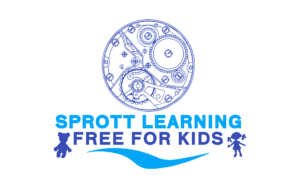Just Keep Stimming
By Richard / February 23, 2023 / Uncategorized / 0 CommentsHave you ever seen a child flapping or shaking their hands for minutes on end? Maybe they were spinning, rocking, or humming. Then again you may have seen a child hitting their head, slapping their hands, or clapping their hands quite hard. This is what we, in the autism community, call stimming. Stimming is the common shorthand for self-stimulation or self-stimulating. It is used to describe activities or actions that children and adults with autism use to provide themselves with sensory input. The reason autistics engage in these behaviors is to help them cope with various emotions, stressors, and situations (Brennan 2021).
No, Really, You Stim Too
I ask you to think of it this way. When you are sad do you have a favorite song, you listen to? Maybe a special sweet treat you enjoy? When something makes you happy, do you dance around? When you get frustrated is there some inner dialogue that helps you calm yourself down? In each of these examples, you are stimming. You have a specific action or activity that provides self-stimulation to help you process what you are feeling in that moment. Humans as a species use all forms of stimming to help process and express emotions. This is precisely how folks with autism use stimming (Brennan 2021). Now that we’ve established what stimming is and that we all do it in some capacity, let’s talk about how it looks with autism.
Stop Hitting Yourself
The most common confusion I hear from neurotypicals is concern about why a child is hitting themselves. As an adult with autism, I can share my experience with self-injurious behaviors, or SIB’s, as many professionals refer to them. I was conscious of the fact that I was stuck or fixated on something. I was also aware that it wasn’t normal. Yet I could not “stop” my brain from fixating on whatever it was stuck on. The result was that I would bang my head on a door frame or hit my head with the wrist side of my palm. For many years I thought that this was the only way to get my brain “un-stuck.” Over the years I have also heard other autistics express this train of thought as well. For this type of stimming, working with any of the various behavioral therapies can help children with autism learn healthy and safe alternative behaviors. Though it does take practice and time to develop the new behaviors.
Cutesy Stimming
I’m sure you can name several examples of these “cutesy” stimming behaviors. When I was younger, my stim was spinning. The feeling of being dizzy brought me so much comfort and joy. This desire to spin was probably part of why I was initially misdiagnosed as ADHD. My sons also have their own cutesy stimming. We call Eli our Little hummer boy because when he’s having a hard time, he grabs a blanket and twirls the corner of it while humming. Logan is our little inverter. When stressed he will flip himself upside down on the couch or lay on his bed with his head hanging off. Although they can’t articulate why these actions console them with their three-year-old language. The signs that it helps are clearly there.
In my time working as a paraprofessional, I also observed singing and quoting shows as a form of stimming. It is fascinating to me that even in a nonverbal child singing can be a stim. The distinction is that verbal refers to communicative sounds. Meanwhile, sounds that are not used for communication are considered vocalizations. This client of mine would sing songs from various Disney movies with near-perfect pitch. However, we were never able to determine if certain songs were connected to certain emotions. It never failed though, when he began to have a hard time, he would sing and calm himself down. It was such a beautiful thing to see.
Normalizing Stimming
As you can see stimming is a vital part of the autistic person’s life. Even as a 32-year-old adult I still stim multiple times a day. For this reason, let’s do our part as adults to educate other adults and children that stimming is okay. It may look different than what some people are used to but talking about it and not hiding it from the world is a powerful tool we can use to normalize it. Imagine how it would positively impact an integrated school if neurotypical children were aware of stimming and taught that it was okay. Then we may see neurodivergent children develop more friendships with kids their age. No matter where they fall on the neurodiversity spectrum most people can understand the value of building more accepting and stronger friendships. So, let’s build a better world for tomorrow’s autistics and neurotypicals alike.
Reference:
Brennan, D. (2021, April 21). What is Stimming and what does it have to do with autism? WebMD. Retrieved February 15, 2022, from https://www.webmd.com/brain/autism/what-you-need-to-know-about-stimming-and-autism
